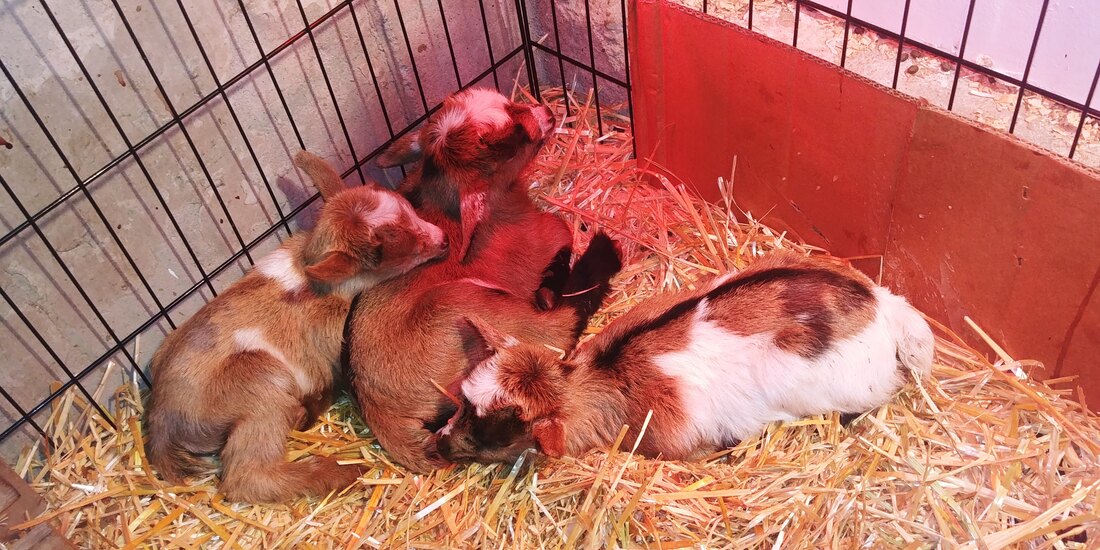|
Before Does go into labor we give preventative medicine. Here are some video clips of how to give a subcutaneous (under the skin) shot vaccine, and how to drench. Click on the buttons below to see the clips.
Here is a link to a slideshow to teach about the signs of labor, the steps we take, problem prevention, and aftercare. There are lots of pictures and tips. Enjoy!
Christmas is over, so now it is time to start thinking about baby goats! We usually get out goats pregnant in late fall (September-November), so we have babies in late winter (February-April). Having early kids means they can be posted to be sold before the rush, are ready to find new homes around Easter.
So what is needed when preparing for birth? I'll give you the rundown of what we have learned through our two...going on three, kidding seasons comprising of seven does giving birth to 18 kids. I'm no expert, but I do know more now that when I started. Keep Track of Dates: First, record heat cycles as you notice them throughout the year for Nigerian's and starting in the late summer/fall for larger goats. Knowing the cycle will help when deciding when to make a date with the buck. It is important to record the times the doe was exposed to Mr. Stinky. If you see the deed happen, mark that on the calendar as well. You may witness it on more than one day, or not at all, but recording those dates will help you determine a more accurate due date. I enter the dates into a Gestation Calculator like this one from the American Goat Society https://americangoatsociety.com/gestation-calculator.php. Or you can count weeks on the calendar (5 months or 21 weeks or 145 days for the little goats and 150 for the standards). I record three dates on a spreadsheet, earliest she could be due, estimated date from when he got her, and the last possible day she could have kids. Knowing all three dates helps me prepare on time. Before Birth: There are some pregnancy problems that we like to keep up on
Prepare For Birth: If this is your first kidding season, YouTube is your best friend. Watch as many birthing videos as you can find. Compare the births to what you read so you have an idea of what you will do if/when problems happen! Most births are perfectly normal, and you are only there because it is so fun to see. But sometimes there are problems. I have learned that no matter how prepared you are, it is not enough for the first few years. Here are my suggestions.
Find and Have Ready: After birth, you will need a few items, so be sure to have them ready to go.
Check out my other articles for Signs of Labor and the Actual Birth Process! |
Author"I've been thinking..." is my husbands least favorite phrase. Every time he hears it he know there will be lots of work, money, and time involved. My name is Anne. I'm not an author or grand storyteller but I do get most of my homestead information from others. So, I thought I would pass on my experiences and ideas. I hope they give you information and ideas to help you get thinking. Archives
Categories
All
|
Site powered by Weebly. Managed by Hostgator






 RSS Feed
RSS Feed